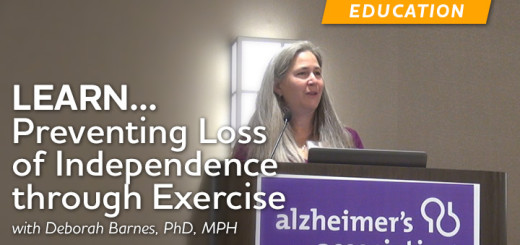Another study encourages keeping your brain active to ward off Alzheimer’s
 In a study published earlier this week by the Archives of Neurology, scientists say their results indicate that people who keep their brains active throughout life with cognitively stimulating activities have reduced levels of beta amyloid plaques, one of the hallmark lesions found in the brains of people with Alzheimer’s disease.
In a study published earlier this week by the Archives of Neurology, scientists say their results indicate that people who keep their brains active throughout life with cognitively stimulating activities have reduced levels of beta amyloid plaques, one of the hallmark lesions found in the brains of people with Alzheimer’s disease.
I’m particularly excited to talk about this research because it is out of one of our local labs (UC Berkeley and Lawrence Berkeley National Labs) and was supported in part by grants from the Alzheimer’s Association!
The claim
Results from the research suggest that greater participation in cognitively stimulating activities throughout a person’s life, but especially in the early and middle years, appears to be associated with reduced PiB uptake, and thus reduced amyloid accumulation.
The methodology
PiB PET and neuropsychological testing were performed in a sample of 65 cognitively normal older participants (avg. age 76), and compared to 11 young participants (avg. age 24.5) and 10 people with Alzheimer disease. Participants completed an interview about various lifestyle practices, including how frequently they participated in cognitively engaging activities from age six to their current age.
Beyond the headline
This is an interesting study, but it is conducted in a small population, so it is hard to generalize based on these preliminary results. Because this is a cross sectional study, which is a “snapshot” of one timepoint, we cannot conclude for certain that the participants’ cognitive activity is what is driving the difference in amyloid levels. For example, it may be that having less amyloid, even earlier in life, may enable more cognitive activity – not that having more cognitive activity reduces amyloid accumulation. It is impossible to tell from this study which is the case.
The bottom line
This study contains some valuable new data regarding the possible relationship between modifiable lifestyle risk factors and the brain changes that are indicative of Alzheimer’s disease. However, this study is cross sectional, meaning it does not follow people over time. To see if there is truly an effect of lifestyle, scientists need to start with both amyloid-free and amyloid-laden populations and observe changes and activity levels over time in both groups. Although promising, much more research is needed in this area before any definitive statements can be made.
For more information on the latest news and developments in Alzheimer’s research, visit www.alz.org/research.

















